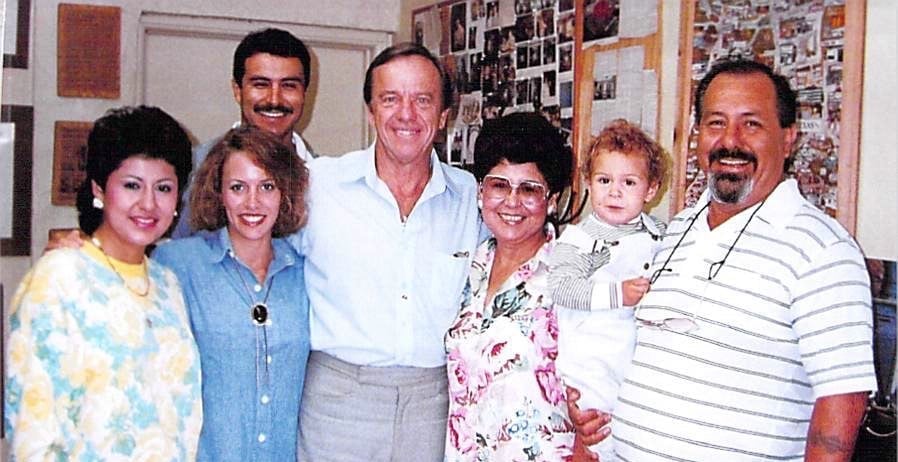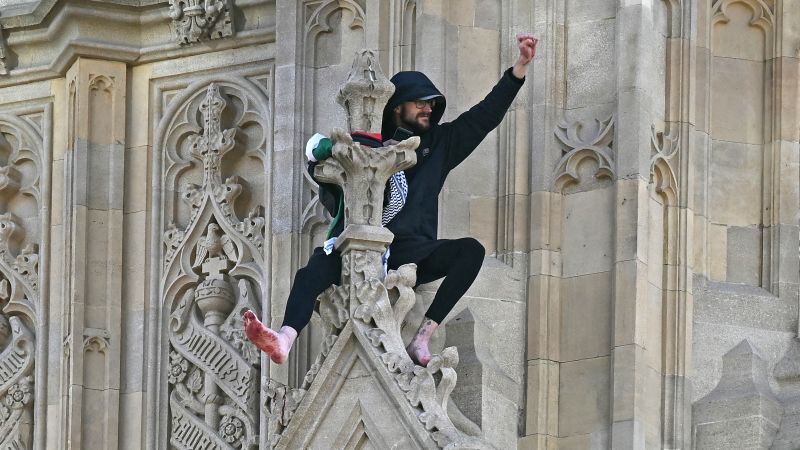Did the First American in Space Take an Extra Golf Ball to the Moon?

Editor’s Note: The Barber, The Astronaut, and The Golf Ball by Barbara Radnofsky and Ed Supkis will be published on October 22 by Stoney Creek Publishing. This excerpt, which has been edited and condensed, is published with permission.
The rural speed trap Texas town of Webster was no comfortable place in the 1960s for Carlos Villagomez, a U.S. Navy seaman who had seen combat on a gunboat on the rivers of what is now Vietnam.
Carlos and his 14 siblings grew up in a loving home in the segregated wards of the Houston Ship Channel, and he and his brothers enlisted in the armed services as soon as they turned 18. Then after returning from the service and aided by the G.I. Bill, Carlos learned to cut hair, and saved money to start a business.
He began buying land for his barber shop and neighboring beer garden near the site for NASA’s new Manned Spacecraft Center. Soon, Carlos was the barber to astronauts, engineers, and other NASA-area workers. But his burgeoning enterprise also attracted a more troubling sort: local police bullies who menaced his customers, shot up his businesses and home, and threatened to lynch him if he didn’t leave town.
Carlos persevered and became a respected local leader in the Houston suburbs. He earned locals’ respect and held offices in government, the Rotary and economic councils, all the while growing his businesses.
As barber to America’s earliest astronauts, he developed his most lasting friendship with Alan Shepard, the Navy test pilot who became the first American in space—and the only one of the “Original Seven” Mercury astronauts to walk on the moon as part of the fabled Apollo program.
At the end of his successful Apollo 14 moon exploration in 1971, Shepard—an avid golfer—played golf in a lunar sand trap on the moon’s surface, in a world-famous NASA-approved demonstration of the moon’s low gravity. It took Shepard two attempts—and two balls—inhibited by the bulky space suit and unable to see a golf ball (or where it lay!) through his helmet and visor. But the demonstration, viewed on live television, captured the imagination of a world enamored with the space program and astronauts in particular.
Upon his return to earth, after mandatory post-flight quarantine, Shepard’s first stop was Carlos’ barber shop. He’d been many weeks without a haircut and wanted to appear his best before the media and in upcoming live appearances, including the White House and the Paris Air Show.
At Carlos’ barbershop, then housed in a Holiday Inn room across the street from NASA’s Manned Spacecraft Center, the two friends shook hands amidst wide grins.
Carlos felt an object pressed into his hand: a golf ball, autographed to the barber by the astronaut, who had just returned from what some regarded as the world’s most famous sports demonstration.
But was Carlos’ golf ball flown to the moon? Through many more years of friendship, golf, beer adventures, and haircuts, Carlos never asked—and Shepard never offered—proof of the origins of the gift.
It’s quite possible, another Apollo astronaut told us in a detailed interview, that Shepard brought a third ball to the moon – inside his space suit pocket where he’d stored the others – in case he missed twice. Did he bring that unused ball back from the moon and give it to his barber?
What we know: Early NASA astronauts enjoyed much greater freedom than their modern counterparts with regard to artifacts and souvenirs of their missions.
NASA granted flexibility to Mercury, Gemini, Apollo, and Apollo-Soyuz astronauts, allowing them to carry and bring home mission souvenirs as their own property. Many Apollo astronauts kept flown-to-the-moon personal and government property, all with NASA’s permission. Historically, most astronauts used their flown items for the best of causes: to promote and fund greater interest in space exploration and the STEM sciences. Shepard championed such efforts and his Astronaut Scholarship Foundation thrives nowadays.
Federal law later cemented this concept through the Apollo missions, including Apollo-Soyuz, in good part to avoid chaos in the trade of flown memorabilia and to preserve the ability of astronauts to donate flown items for charitable causes.
The big exceptions: moon rocks, lunar soil, and dust. Such items are, by law, federal government property.
There’s no shortage of personal memorabilia within the NASA community; it seems every family has space-related souvenirs: papers, notices, patches printed on special “beta” cloth (a lightweight, fireproof material), autographed photos, books, and various NASA and astronaut artifacts.
“In the history of mankind, less than 600 people have flown in space, and yet millions of people have dreamt of going there,” said Robert Pearlman, a space memorabilia expert and historian. “It’s an unreachable but tantalizing destination.” Space souvenirs give those of us—who haven’t had the chance to go into space—the opportunity to live vicariously through items that did, he said.
“I’ve never met anyone to whom I hand a piece that flew in space who doesn’t get a sense of awe,” Pearlman said. “That’s the appeal to space memorabilia and collectibles.”
Pearlman explains that the hierarchy of these items is complex, and the slightest detail can affect how they’re valued. Did they go into space? How long were they in space? Were they in space for 15 minutes on a suborbital flight or did they spend a year in space? When did they fly? Did they fly on the very first missions with Mercury back in the early 1960s? Were they on board Vostok with the cosmonauts? Did they go on Apollo to the moon?
“Something that went to the moon is a Holy Grail, then there’s a hierarchy within that level, too,” Pearlman said. “Did it go into lunar orbit? So you just circled the moon for a while and then came back to Earth, [or did you] land on the moon?”
“If it was taken to the moon, did it stay in the lunar module or was it taken out on the surface?”

And a key measure, according to Pearlman: “Was it stained by moon dust? Most of those items that went to the moon—there weren’t a lot—ended up in museums. You only have a handful of items left over that it’s possible for a private person to own.”
The right for the early astronauts to keep items they took into space was first established in a Texas courtroom when heirs of Apollo 12 astronaut Alan Bean battled over several dozen items brought back from space.
The case, Bean v. Bean covers both the large scope and history of astronaut-flown items and related federal laws.
The facts in the case were clear: Apollo moonwalker Alan Bean had many of those “space artifacts” in his possession at the time of his death. The heirs argued over who should inherit them, and Texas courts made very clear that the items were indeed the astronaut’s personal property. One of the items in the Bean case was a huge, heavy hammer – government-issued– that Bean was supposed to leave on the moon. Instead, he brought it home. The government did not demand its return, following NASA custom benefitting our earliest astronaut heroes, up to the Apollo-Soyuz astronauts.
Years before, Apollo 16 astronaut Charlie Duke provided key testimony before Congress, calling for federal legislation recognizing astronauts’ rights to claim ownership of such items, and explaining the important charitable purposes behind many auctioned pieces of memorabilia. On October 5, 2012, Congress passed the “Artifacts of Astronauts Act,” which protects the early astronauts who flew and claimed ownership of their artifacts—before the Space Shuttle missions.
Later controversy involving back-dating souvenir postal covers that had been carried aboard Apollo 15 in 1971 led to tighter controls, including the listing of specific space memorabilia the astronauts sought to carry.
So what does all this mean for the barber with the golf ball?
Shepherd—who bought the golf balls used in his lunar golfing episode with his own funds and received NASA approval for his golfing gravity demonstration—had every right to take home a souvenir, including an unused third golf ball from his demonstration.
Based on Pearlman’s ranking, the Carlos golf ball (if it could be proven to have flown) could be a sought-after piece of space memorabilia.
But did the Carlos ball fly?
Carlos doesn’t know for sure, but he believes it did.
Shepard died in 1998 and never spoke to the issue. The ship’s manifest listed only two balls.
But his daughter, Laura Shepard Churchley, knowing her Dad and his fondness for things in threes, said she believes that Carlos’s ball flew, along with the two left on the moon’s surface. Shepard’s contemporaries Duke and former Johnson Space Center Director George Abbey were clear in their opinions that the Carlos ball flew.
Pearlman argues that Shepard could easily have provided provenance—and had done so with other flown memorabilia. And if the golf ball did fly, he asked why would a famous astronaut give such an extraordinary object to a barber instead of a beloved family member?
Yet Carlos never asked for written proof from his friend—and Shepard never offered it. In the decades that followed, neither man raised the issue.
The golf ball gift raises more questions than answers.
More than ever in a divided and contentious world, we should indeed question what’s important. What’s valuable in our world?
It’s friendship.
There are many brilliant, helpful, kind people who aren’t famous at all. They surround us. We just need to learn to recognize them for their greatness.
Related
5 Things I Never Play Golf Without: David Dusek
Our 11-handicap equipment writer always brings his favorite divot repair tool, a portable speaker and some high-tech gear to the course.As long as the weather i
Donald Trump’s golf course wrecked by pro-Palestine protesters
Pro-Palestinian protesters have vandalized parts of U.S. President Donald Trump's golf course in Scotland in response to his proposal for the reconstruction of
Man holding Palestinian flag scales London’s Big Ben hours after…
CNN — Emergency services were called to London’s Palace of Westminster on Saturday a
EPD: Drunk driver parked car on golf course
EVANSVILLE, Ind. (WFIE) - Evansville police say they arrested a man after finding him drunk in his car that was parked on a golf course.Officers say they were c











